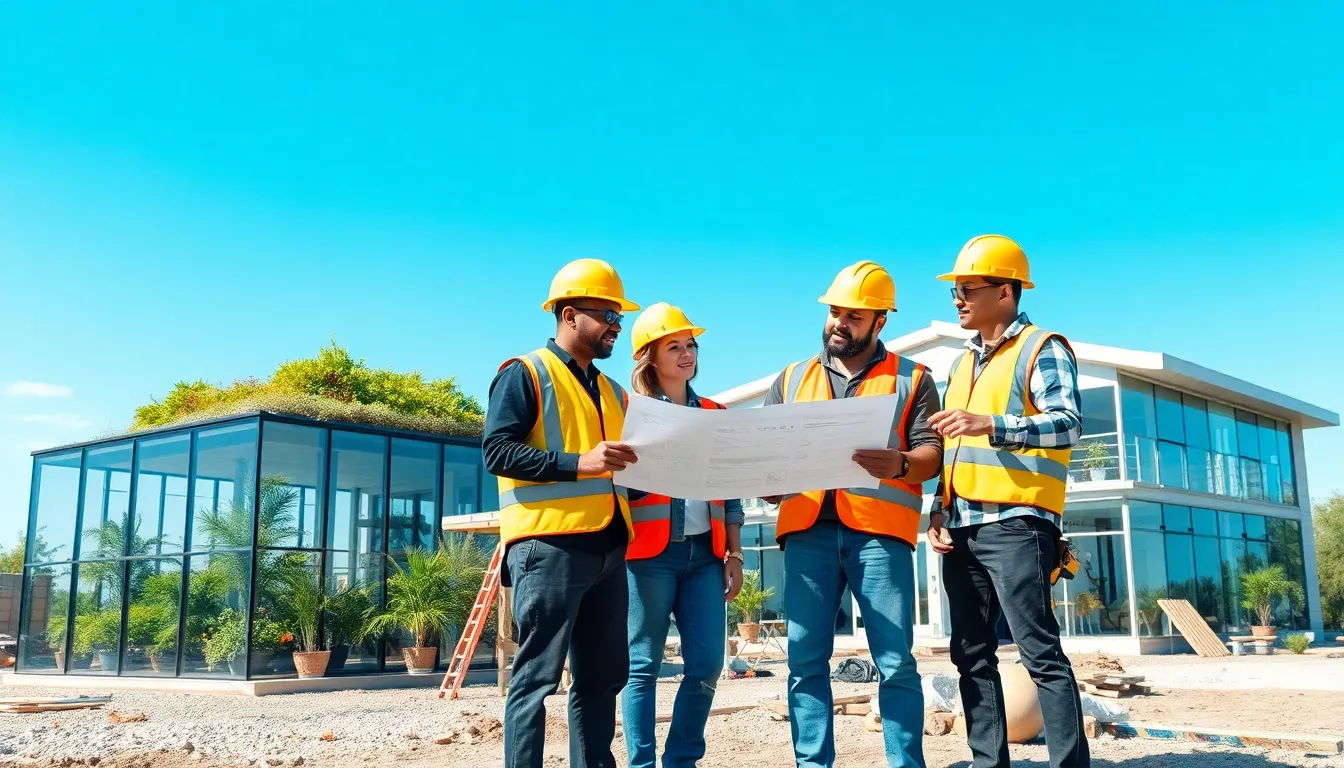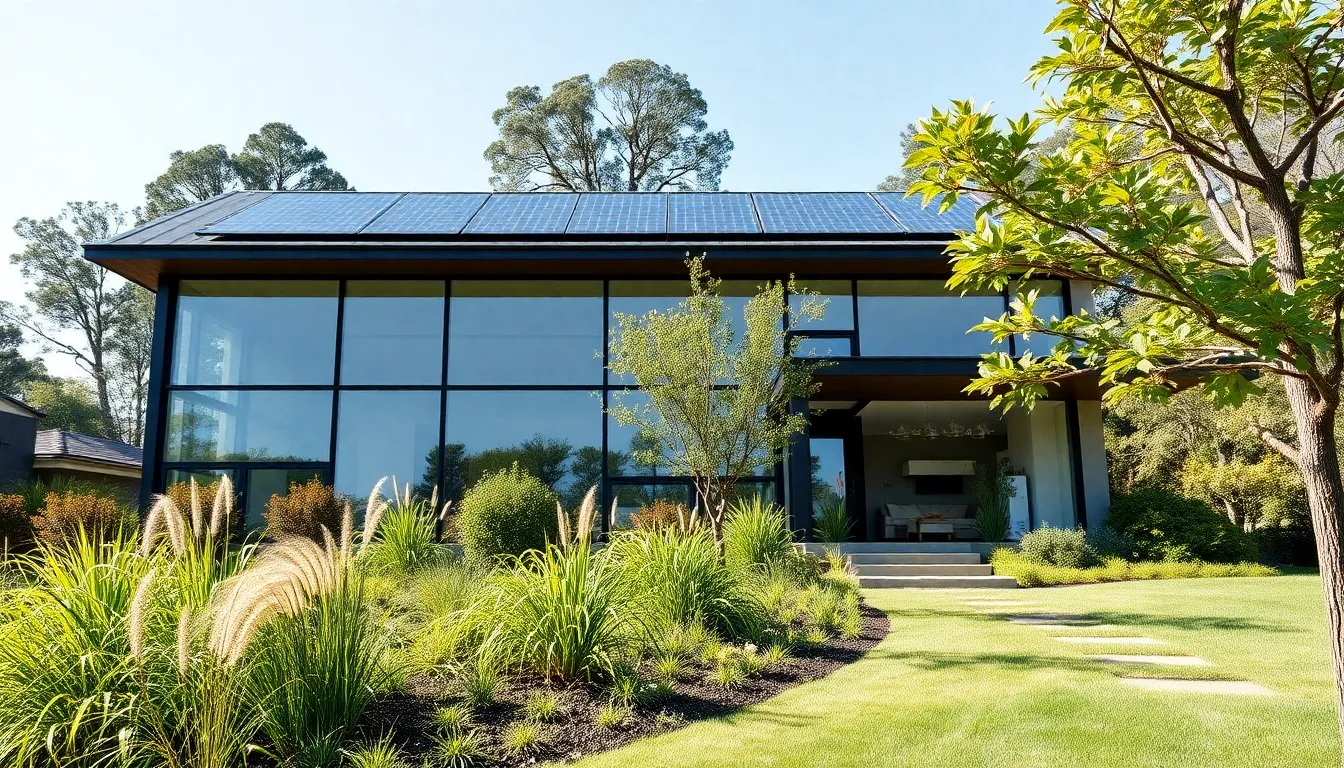Table of Contents
ToggleImagine a world where your home is not only a shelter but also a sustainable sanctuary. Enter sustainable living builders, the superheroes of eco-friendly home design. They wield tools and green materials instead of capes to create comfortable spaces that harmonize with nature. Ready to find out how these builders can transform your living space while saving the planet? Let’s jump into the vibrant world of sustainable building practices, offering benefits that aren’t just good for the Earth but also for your spirit. This isn’t just construction: it’s a revolution.
What Are Sustainable Living Builders?

Sustainable living builders are professionals who specialize in constructing homes and buildings with minimal environmental impact. They employ innovative designs, eco-friendly materials, and energy-efficient technologies. But they’re not just about green roofs and solar panels: they create functional and aesthetically pleasing spaces tailored to modern living. These builders aim to reduce waste, conserve natural resources, and promote healthier living environments through thoughtful design and construction practices.
Benefits of Sustainable Building Practices
The benefits of sustainable building practices extend far beyond mere environmental considerations. Here are some of the key advantages:
- Lower Energy Bills: Homes designed with energy efficiency in mind typically see significant reductions in utility costs. By harnessing natural resources, homeowners can keep their bills in check.
- Improved Indoor Air Quality: Sustainable builders often use non-toxic materials that promote healthier indoor environments. The result? Less dust, fewer allergens, and a home that feels fresher all year round.
- Increased Property Value: As more buyers seek sustainable options, properties built with these principles can command higher prices. Sustainable living is becoming a hot trend in real estate.
- Conservation of Resources: From water-saving appliances to durable building materials, sustainable building practices help conserve resources for future generations. It’s like leaving a little gift for those who come after us.
Eventually, embracing sustainable building leads to a positive ripple effect, benefiting both the planet and the people who inhabit it.
Key Elements of Sustainable Living Design
Incorporating sustainable design principles is essential for builders. Here are some critical elements:
- Energy Efficiency: Utilization of passive solar design, high-quality insulation, and energy-efficient windows can drastically reduce heating and cooling costs.
- Sustainable Materials: Recycled, reclaimed, and rapidly renewable materials form the backbone of a sustainable building. Bamboo, cork, and recycled steel are popular options.
- Water Conservation: Rainwater harvesting systems and low-flow fixtures minimize water usage. This feature not only supports sustainability efforts but also keeps water bills lower.
- Site Assessment: A thorough examination of the building site ensures that the structure is adapted to the existing landscape, preserving native plants and minimizing ecological disruption.
- Flexibility and Functionality: Sustainable designs promote spaces that can adapt over time to meet the evolving needs of families. This increases longevity and reduces the need for future renovations.
Top Sustainable Living Builders to Consider
If you’re looking to embark on a sustainable building journey, here are some builders known for their excellence in this realm:
- Blue Sky Homes: Situated in California, this builder focuses on modular homes that are entirely energy-efficient, utilizing innovative designs.
- Habitat for Humanity: More than just a charity, Habitat for Humanity incorporates sustainability into affordable housing, making a significant impact in communities.
- Green Modern Kits: This Virginia-based company offers contemporary, green homes with a focus on eco-friendly materials and designs.
- Earthship Biotecture: Known for constructing off-grid homes made from recycled materials, Earthship builders prioritize environmental sustainability and energy independence.
- New Avenue: Focused on creating smaller, comfortable homes using sustainable practices, New Avenue revitalizes urban spaces with its eco-friendly designs.
How to Choose a Sustainable Builder
Selecting the right sustainable builder is crucial. Here are some tips to guide you:
- Research and Reviews: Start by checking their portfolio and customer testimonials. Positive feedback can be a good indicator of quality.
- Certifications: Look for builders that hold green certifications, such as LEED or ENERGY STAR. These certifications reflect their commitment to sustainable practices.
- Ask Questions: Engage potential builders with questions about their methods, materials, and overall philosophy on sustainability. Transparent communication can help in understanding their approach.
- Get References: Speaking to past clients provides insights into the builder’s reliability, craftsmanship, and how closely they adhere to sustainable practices.
- Consider Budget: Remember that sustainable building isn’t always about upfront costs. Consider the long-term savings related to energy efficiency and durability.
Future Trends in Sustainable Building
The realm of sustainable building is constantly evolving. Here are a few trends that are shaping its future:
- Smart Home Technology: Integration of smart home systems can optimize energy use, adjust lights, and even manage water usage in real-time.
- Carbon-Neutral Homes: Builders are striving for homes that offset their carbon footprints entirely, using renewable energy sources and sustainable materials.
- Biophilic Design: Encouraging connection with nature is becoming paramount, with designs that bring more natural light and greenery into living spaces.
- Modular and Prefabricated Homes: These homes are quicker to build and can use materials more efficiently, minimizing waste and energy during construction.
- Community-Driven Projects: There’s a growing trend towards designing neighborhoods focused on sustainability, emphasizing shared resources and communal spaces.




